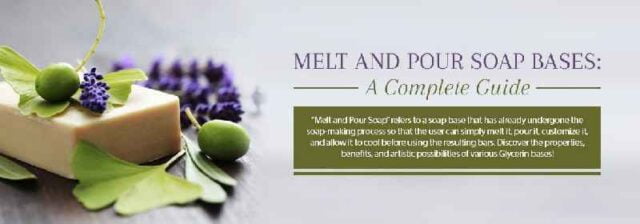These 2 questions crop up without fail pretty much every week in the soap making forums and for good reason. It is a problem.
If you know anything about me at all you will know that I only use essential oils in my soap making. I have nothing against artificial fragrances, it just was not the direction I wanted to take in my business which is all about keeping my soap as natural as possible and teaching others the same. I generally only use natural colourants, for the same reason.
That said, using essential oils in soap making is not the easy option. The high PH in soap can destroy some scents and scent can also to fade over time. There are ways and means of trying to get your scent to stick in your soap, but ultimately it is very much a case of trial and error and what works for you.
This is the one subject that arises time and time again amongst soap makers and is probably the biggest issue we face.
With that in mind, I have put everything I have learnt so far in this blog. It includes which essential oils last the longest in your handmade soap, the best ways to blend essential oils for soap making and hints on tips on how to get your scent to stick
This is not the definitive right way, just my way and what I have learnt in my soap making journey.
Mid notes can work well alone on the whole, and even better when blended with a base note. Base notes last the longest, some, not all, can overpower other scents. Ylang Ylang is a good example of this. Lavender – herbaceous/floral – goes with pretty much everything !!

What is meant by ‘notes’ in essential oils?
In a nutshell, essential oils are split in to 3 notes top, middle and base. Some cross over 2 of those notes.
Top notes are lighter and tend to be those you smell first in a blend. Citrus scents are a good example of a top note, light and fresh. Top notes disappear quickly – this goes for scent in a perfume as well as in soap although there are exceptions such as peppermint.
Middle notes are a little heavier, they can be floral , woody, spicy or on occasions citrus. They tend to hang around a little longer than top notes. Lemongrass, geranium, lavender, rosemary are all examples of mid notes.
Base notes are much heavier, tend to be woody or spicy but can include floral such as Ylang Ylang. These tend to be the longest lasting and can work very well in soap making especially when combined with some of the lighter notes.
Best Essential Oils for Soap Making
FAQ
What oil makes soap last longer?
How do you make essential oils last longer in soap?
What is the best essential oil to use in soap making?
Which essential oil lasts the longest?
Which essential oil is best for soap?
Citrus oils are top notes, which means they are the first scent you smell but dissipate quickly. Lemongrass, however, gives a much stronger, longer-lasting aroma, making it the perfect choice for citrus soaps. 2. Bergamot Essential Oil Bergamot is a probable hybrid, likely a combination of lemon and bitter orange.
Is using olive oil after two years still beneficial?
Yes, olive oil is rich in good fats, helps control cholesterol levels, important antioxidants for immunity and the cardiovascular system, increases satiety, improves intestinal transit, acts as a natural anti-inflammatory and helps maintain bone health as it is a source of calcium and vitamin K.
What is the best lavender essential oil for soap making?
There are plenty of different varieties, varying from region to region. One of the most popular versions of lavender essential oil for soap making is 40/42 lavender. Lavender 40/42 is different from other lavender blends as it is specifically formulated to smell the same every time.
Which scent lasts the longest?
Base notes last the longest, some, not all, can overpower other scents. Ylang Ylang is a good example of this. Lavender – herbaceous/floral – goes with pretty much everything !! Cinnamon Leaf – spicy/strong – try with sweet orange, clove (use very sparingly) This is just a guide to whet your appetite and get those creative juices going.
